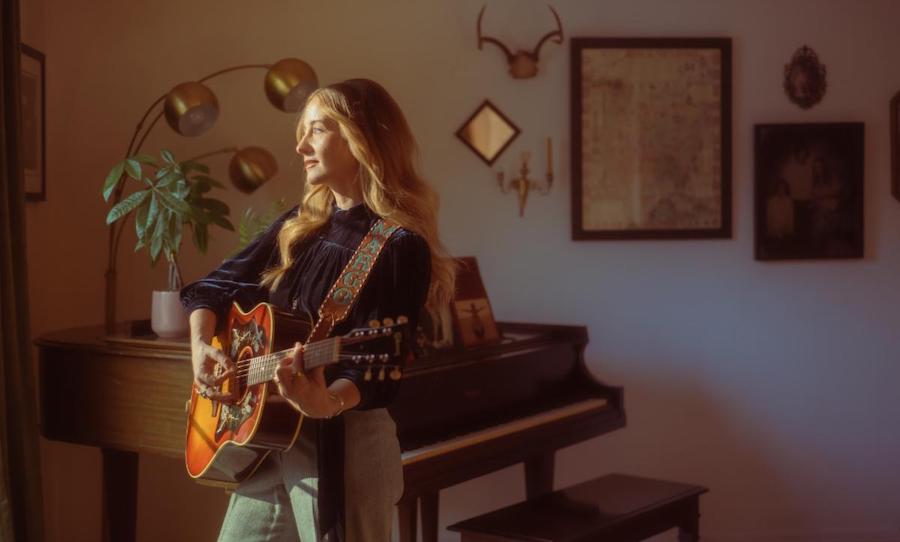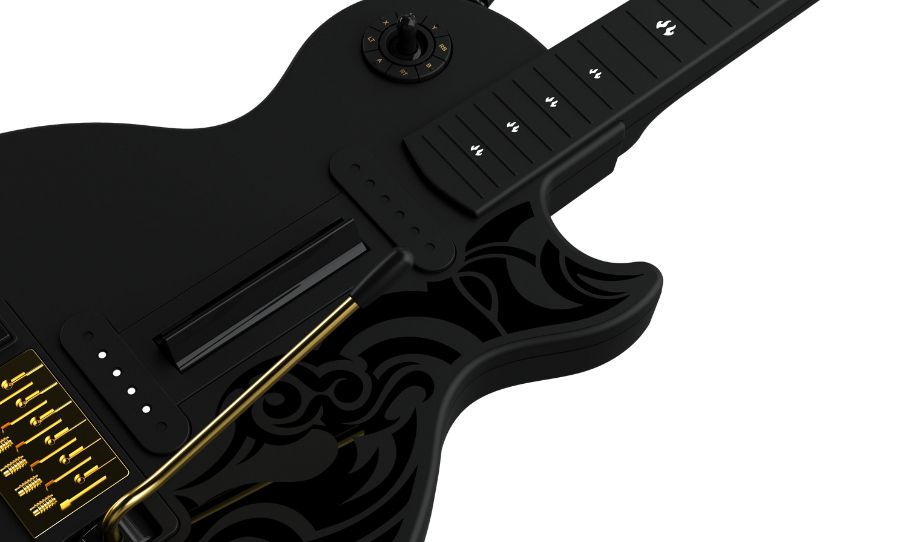After 60 years, the Gibson SG remains the Les Paul’s rebellious cousin. If rock ‘n’ roll’s the Devil’s music, then the SG was made in his image.
In 1960, Gibson called an emergency meeting at their factory in Kalamazoo, Michigan. Sales for their signature Les Paul guitar had fallen dramatically. They needed to come up with some big changes — and fast — if they wanted to compete with Fender’s success. Enter: the Gibson SG.
Their announcement read: “Here’s an established favourite — now offered with a completely new styling: thinner, lighter in weight and custom contoured.” The ‘Solid Guitar’ was the new Les Paul. And Les Paul himself hated it!
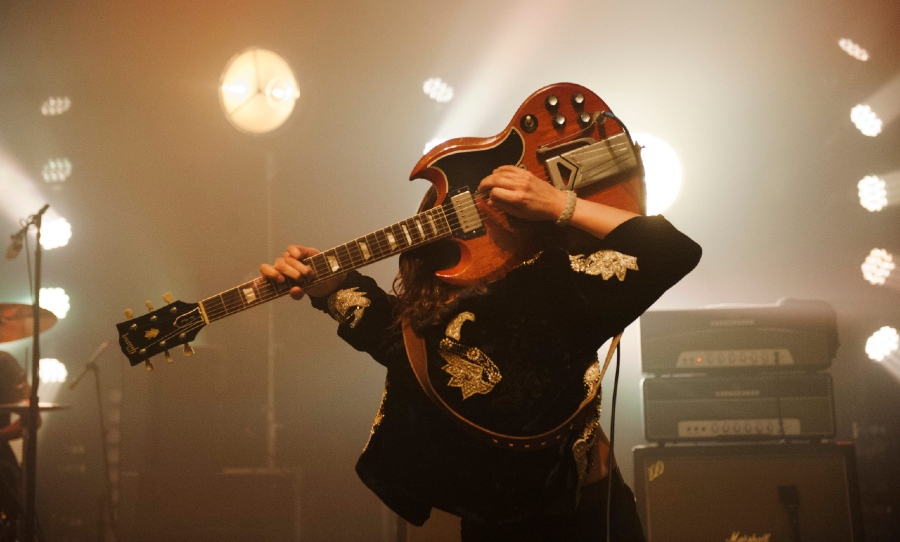
“If you wound those guys off I’d be a lot happier”, the famed polymath chuckled in an interview for Turn It Up! The devilish double-cutaway was radical — but it allowed for easy access to the higher frets. Les Paul wanted a solid guitar and didn’t like that you could pull back on the neck.
But this somewhat flimsy feature was innovative for guitarists who would ditch the tremolo arm in favour of engaging the neck. It’s how the ominous drone that opens Black Sabbath’s Iron Man was achieved.
By 1963, the Les Paul name was dropped and the new line of Standards, Specials, Customs and Juniors would forever be known as the ‘SG’ — the rocker’s weapon of choice from Elvis to St. Vincent. For 60 years, it’s been Gibson’s only guitar to remain in constant production. And you’ll see why.
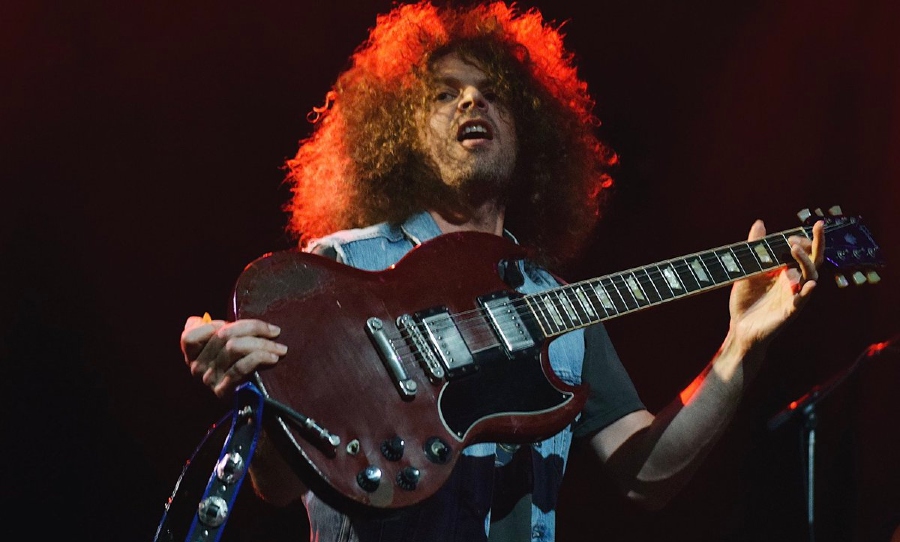
Sister Rosetta Tharpe
Dubbed ‘The Godmother of Rock ‘n’ Roll’, Sister Rosetta Tharpe is closely associated with the original cream coloured, three-pickup Custom. The new Les Pauls hadn’t quite taken off among guitarists in the US. But with her mix of gospel, blues and pre-rock guitar work Sister Rosetta would help make the SG the iconic guitar it is today when she showcased the instrument to British musicians on her 1964 UK tour.
50 years on, Brittany Howard of Alabama Shakes would draw comparisons to Sister Rosetta when she began sporting a three-pickup Custom of her own. “I didn’t even know about Sister Rosetta when I chose that guitar,” Howard told Premier Guitar, “I always thought it was the one for me.”
That really says it all. We could end our appreciation here really.
Samantha Fish
A highlight of the 2019 Bluesfest, Samantha Fish is a contemporary guitarist to take note of. Her albums are rich with rootsy Americana and have helped keep the blues alive and well in the modern age. But it’s her live sets where she really turns things up to 11. And her number one guitar? You guessed it, the Gibson SG.
Her 2015 SG Standard in alpine white was her first endeavour into online shopping, which for a guitarist can be pretty scary. But it was love at first sight — and sound. Fish is a huge AC/DC fan so it was always going to be an SG, but she didn’t expect to love her new guitar so much. Showcasing it during an episode of Rig Rundown Fish held her SG up declaring “it rocks, it’s loud and you can get quite a few variations of tone of out this thing”.
Fish has never modified her SG, keeping it as it was when she pulled it out of the box.

Pete Townshend
Pete Townshend’s path to the SG was forged one night in June 1964. The Who were playing their first show at The Railway Hotel in West London, ripping through their ‘Maximum R&B’ set of Motown standards when Pete thrust his Rickenbacker 335 into the air – tearing a hole in the ceiling and, with it, the head of the guitar. In a mad frenzy, he decided to finish the job — not “smashing it”, as he clarified in his memoir, “but sculpting it”. So began The Who’s long-running ritual of busting up their gear at the end of their sets. It was performance art, after all.
By 1968, Townshend had smashed up a lot of Rickenbackers and they were getting pretty pricey to replace! He tried a few Fender models, but those damn bolt-on necks needed a lot more work to break down on stage. The SG, on the other hand, was light and malleable — but that’s not the only reason he made it his guitar of choice up until 1971.
The Gibson SG Special’s P90s were a slightly larger wound pickup that complimented his Hiwatt and Marshall stacks quite nicely. Townshend admitted on many occasions he wasn’t as competent a guitarist as his peers, but he made up for it with the raucous feedback he could produce with the SG and the incredible showmanship he displayed on stage. The SG never looked, or sounded, better than when it was in his hands.
With the SG, Townshend and The Who upstaged The Rolling Stones in their own Rock and Roll Circus TV special (below), performed career-defining sets at the Woodstock and Isle of Wight festivals and produced one of the greatest live albums of all time with 1970’s Live at Leeds.
Robby Krieger
“I really learned to play as a member of the Doors”, admits Robby Krieger in a 2016 interview with Guitar World. Krieger is one of classic rock’s most underrated guitarists. And when you’re in a band overshadowed by the behemoth that was Jim Morrison, it’s easy to fall between the stage lights. But in the dark, Krieger shines.
He’s a one-man guitar army whose grown out fingernails picked complex patterns while his other hand danced along the fretboard. He had to make up for the lack of a bass player and fill out the rhythm section all the while playing lead in what can only be described as a unique fusion of electric flamenco and blues. And there was only one guitar that could make it all work.
The SG was Robby Krieger’s first foray into the electric guitar. Krieger was a fan of the early ‘60s folk scene and began learning Spanish flamenco on an acoustic. Like many guitarists of his time, it was seeing Chuck Berry play in 1964 that gave Krieger the push to go electric. Flash forward to 1966 and it’s at Ace Loans in Santa Monica that he bought an SG style Melody Maker (in cherry red because it was the same colour as Chuck Berry’s Gibson ES-355).
It was the feel of the guitar that won him over, not to mention the striking shape. Krieger commented on the double cutaways in a Gear Factor interview, quipping, “I was on this acid trip one time and it reminded me of the devil”. That’s definitely one way to fall in love with the SG.
The single-coil model would carry Krieger’s tone through The Doors’ early days on the Sunset Strip and can be heard on the first album paired with a Fender Twin Reverb. Not long after the sessions, the guitar was misplaced or stolen, but it was no loss for Krieger as he could finally afford to go all out with the Gibson SG. You can hear him play Standards and Specials across all The Doors’ studio and live albums.
And did I mention Light My Fire was the first song he ever wrote?
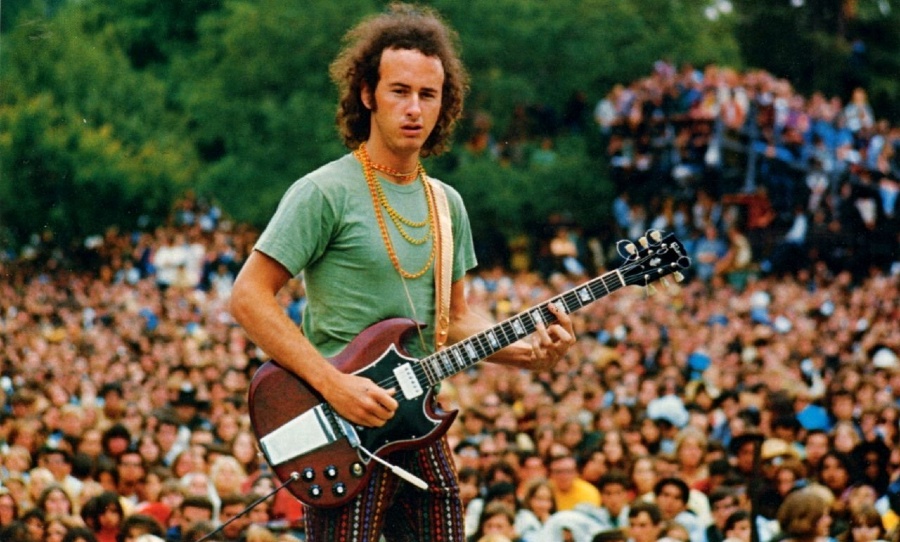
George Harrison
A key sound of Beatlemania was George Harrison’s Gretsch guitar and sharp precision on the fretboard. Rival Keith Richards once jibed that producer George Martin didn’t serve justice to Harrison’s playing on the first few Beatles’ albums, but it was early days for guitar music when The Beatles arrived on the scene.
The real fun didn’t kick off until the mid-’60s and rock music took on a life of its own. The group began to eschew the pop formula, psychedelics had entered the equation and the group — lead by the songwriting team of John Lennon and Paul McCartney — began to take charge of the studio for the fruitful second half of their career.
During this time George Harrison had a brief yet prescient stint with the Gibson SG, purchasing a 1964 SG Standard in early 1966. The SG was Harrison’s main guitar for The Beatles’ acid-soaked album Revolver — a precursor to the mammoth Sgt Pepper’s Lonely Hearts Club Band that followed in 1967.
Innovative recording techniques were developed during these sessions that pushed conventions to their limits. There was various double-tracking experimentation as well as backward guitar playing. Harrison can be seen with his ’64 SG in the promo clips for the singles Paperback Writer & Rain. Harrison also played the guitar live with The Beatles at their last ever UK concert before wrapping up as a touring band in 1966.
Harrison’s SG would continue to be showcased on 1968’s The White Album and can even be seen being tinkered with by John Lennon in footage shot during the Hey Bulldog recording session. George Harrison would later give his SG to Pete Ham of Badfinger in 1969 after they signed to Apple Records, which means you probably heard it close out the iconic show Breaking Bad.
Eric Clapton
“I was disgusted and pleased at the same time,” was Eric Clapton’s response in a 1999 60 Minutes special about seeing the graffiti “Clapton is God” plastered around London. After serving as lead guitarist in the Yardbirds and a short stint with John Myall and the Bluesbreakers, Clapton had cemented himself as one the best guitarists on the British blues scene in the mid-’60s.
He produced a highly sought after tone by pushing his JTM 45 Marshall amp into the ‘break up’ zone and developed a style defined by its subtlety and dynamics. It’s unfortunate then that what led him to the SG was his Les Paul being stolen when the Summer of Love was on the horizon.
In 1966, Clapton formed the supergroup Cream with Jack Bruce and Ginger Baker. During this time he was developing a new sound, first explored on the Les Paul, by rolling down the tone and dialling up the volume. In March 1967, Clapton bought a second-hand 1964 Gibson SG Standard and it proved to be the best guitar for the job.
He refined what he began calling ‘The Woman Tone’ which he played through a Marshall stack. “It is more like the human voice than the guitar”, Clapton told Beat Instrumental in a 1967 interview, “It calls for the correct use of distortion.” With added Wah, the tone is best demonstrated on tracks like Strange Brew and Sunshine of Your Love.
Speaking of psychedelia, you can’t talk about Clapton’s SG without mentioning the paint job. During the Summer of Love, Cream was set to make their US debut. The worn and used second-hand SG wasn’t presentable in Clapton’s eyes and Cream’s manager, Aussie-born Robert Stigwood, wanted the band to really make an impression.
They enlisted the help of Dutch designers Simon Posthuma and Marijke Koger (known as the art collective ‘The Fool’) to create a captivating display on the guitar. Their colourful work on the body of Clapton’s SG featured a winged sprite playing a triangle set against the backdrop of a starry sky. The SG would take on the namesake of its artists and forever be known as ‘The Fool’.
Clapton would play The Fool until the end of Cream in November 1968.
Frank Zappa
What can be said about Frank Zappa that hasn’t already been said? To listen to his work is to hear the inner workings of a musical virtuoso that fused everything that came before him and paved the way for what could come next. To see him play live would have been like attending the Sermon on the Mountain – a lit cigarette placed in the headstock of the guitar signalled all hands on deck for a free-form jam that would erupt until the cigarette burnt out.
I could use this opportunity to argue that it’s criminal for Hendrix to continually take the top spot of the greatest guitarist of all time when the title really belongs wholly to Zappa. But we’re celebrating the SG here. And Zappa loved the SG.
There are two particular SG models closely associated with Zappa — and they were heavily modified because he’s, well, Frank Zappa. On the 1974 live album Roxy and Elsewhere, Zappa used a decked out Gibson SG Special that was dubbed the ‘Roxy’ after the venue it was played at in Hollywood.
Zappa had the P90 pickups routed for humbuckers and a tremolo arm was installed. Two switches were fitted to the pickguard – one switch would interchange the pickups between single-coil and humbuckers, while the other switch allowed for a phasing option when both pickups were engaged. The tone possibilities were as eccentric as the man himself.
The ‘Baby Snakes’ SG was Zappa’s main guitar towards the end of the ‘70s. It’s important to note that this is not a Gibson, but was built by “a guy in Phoenix,” who made his way backstage during one of Zappa’s shows and sold the guitar to him for $500 — bargain! Its unique sound came from the unknown pickups and the fact that the neck had an extra fret which pushed the neck pickup down slightly on the body. The magnets were therefore engaging the strings from a different position than the regular SG.
Rex Bogue, the man who Zappa had enlisted to resurrect the Stratocaster Hendrix burnt at the 1967 Miami Pop Festival, added similar modifications to that of the Roxy SG. A bonus onboard preamp was also installed to kick things up a notch. This SG can be heard paired with the tiny attack of his Pignose amp on albums such as Over-nite Sensation and Apostrophe(‘). It also makes an appearance in the 1977 concert film Baby Snakes where the SG gets its name.
Great googly moogly!
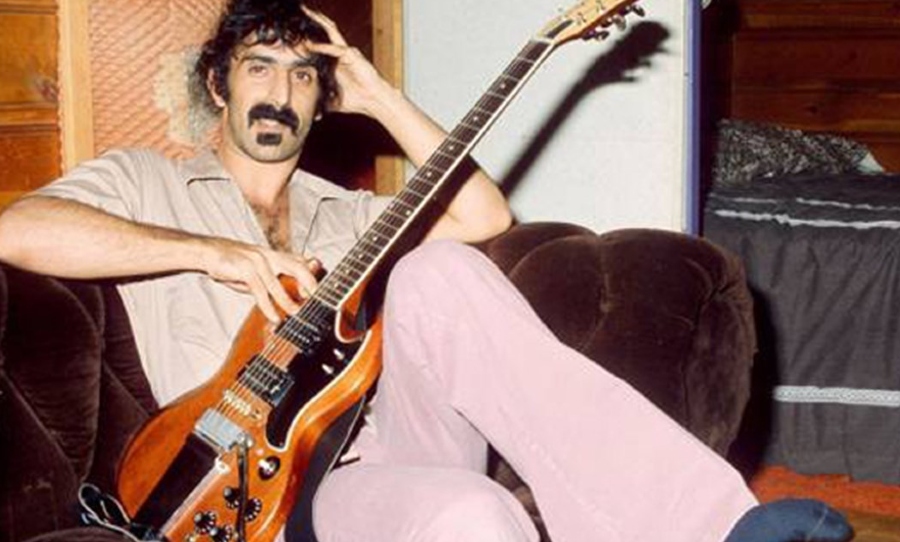
Tony Iommi
The ‘Godfather of Metal’ is as much a part of the SG as the SG is a part of him. But Tony Iommi’s career as a guitar player was almost over before it began. In 1965, while working the factory line in Birmingham, an industrial accident lead to the ends of Iommi’s middle and ring finger being chopped off his fretting hand. Inspired by jazz guitarist Django Reinhardt — who only fretted with two fingers due to an injury he sustained in a fire — Iommi fitted thimbles to the tips of his fingers.
Iommi personally modified the Stratocaster he owned to adapt to his new style of playing. The frets were filed down and he opted for a lighter string gauge, which back then, was hard to come by. Iommi improvised with banjo strings. Tuning the strings down also meant less tension so they were easier for him to bend, which paved the way for a heavier sound.
Being the Hendrix fan he was, the Stratocaster was the guitar Iommi took into the studio when Black Sabbath recorded their first album in 1969. However, a busted neck pickup one song in would force Iommi to go for his backup guitar: a 1964 Gibson SG Special. “Once I used that I never went back”, he told Gibson TV.
Iommi’s iconic SG was dubbed the ‘Monkey’ SG for the sticker of a fiddle-playing monkey he stuck on the body. It came into his possession after swapping his right-handed model for a left-handed model that was owned by a right-handed player!
Iommi would modify his SG the same way he did his Stratocaster before it was stolen from the airport. Luckily, it was only gone for six months. Warner Brothers tracked the Monkey SG down to a pawnshop where they bought it back for the Riff Man to feature on the first five albums from Black Sabbath’s original line-up. You can even see him sporting a white, three pickup Custom in promo clips for the song Paranoid.
Angus Young
You knew Angus Young would pop up on this list eventually, strutting around on stage in a schoolboy uniform, flashing devil horns between licks. He and the SG are practically joined at the hip. Paired with his brother Malcolm’s Gretsch rhythm section in AC/DC, Young is a force to be reckoned with.
Angus Young came from a musical family — his older brother George was a member of ‘60s pop sensations the Easybeats. There was always a guitar laying around the house for the young Angus to get stuck into. He learned from watching his brothers play, but his smaller hands meant he couldn’t play many open or bar chord configurations.
Young would opt to rock out with power chords and master his lead runs, jumping straight on the guitar when he would get home from school and never changing out of his uniform. After purchasing his first SG from a Sydney music store in 1971, it became his guitar of choice for its lighter weight and easy fret access. Oh, and can’t forget the devil horn double cutaway. Young owned many SG’s throughout his career with AC/DC, but he still has his original SG, which has since had its neck replaced for a new one with lightning bolt inlays.
His bone-crunching tone that riff after riff has inspired a wave of budding rock guitarists. His pickups were always modified custom-wound Seymour Duncans with a DC resistance of 7.8 – 7.7 (not too hot) allowing him to ride the volume knob when he goes from rhythm to lead.
His SG blares out of a Marshall hundred-watt stack where the bass and treble knobs sit at about halfway. The real secret to his stage presence, however, comes from his Schaffer-Vega diversity system: a wireless guitar setup developed in the mid-’70s that allowed for Young’s very physical antics.
AC/DC shows are famous for their decibel breaking levels of volume. It’s not noise pollution, it’s rock and roll. And it’s pure SG.
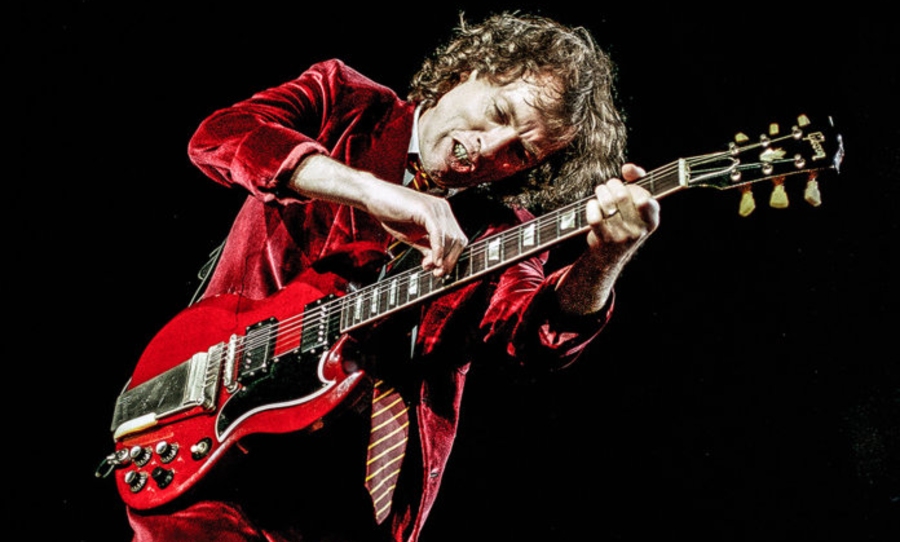
Hannah Findlay
While we’re down under, our next SG wielding guitar God is Hannah Findlay of Stonefield. When the four Findlay sisters won Triple J Unearthed High in 2010, they were praised for their throwback, organ-tinged sounds inspired by ‘70’s rock. In the promo for their debut single, Through the Clover, Findlay can be seen flaunting a cherry red ’61 Gibson SG reissue with a Maestro Vibrola. This would become one of her main studio guitars.
Following a successful first album in 2013, Findlay took a Les Paul out on tour. But as the tale often goes, it was stolen and never recovered. A fan of Frank Zappa, Findlay purchased another SG — a Custom Shop ‘62 reissue in alpine white.
Findlay ran the SG through a Big Muff and VoxAC30 for their follow-up album, 2016’s As Above, So Below, and laid down some hypnotic, psychedelic guitar work. That year they supported Fleetwood Mac on some of their Aussie tour dates copping heaps of praise from Mick Fleetwood himself, who knows a good guitarist when he hears one.
Stonefield began to fine-tune their sound when they signed to Flightless Records — the King Gizzard label (and yes, they’ve sported some SG’s in their time too). Their third album Far From Earth saw Findlay’s guitar work take a step back to allow for more space and dynamics in their songs. It just goes to show the versatility of the SG when it’s in the right hands. The band’s latest release Bent shows off Findlay’s knack for doom-rock inspired riffs that rival the Riff Lord himself, Tony Iommi.
Jake Kiszka
Jake Kiszka is probably the youngest guitarist to grace this list, but he is a beast when he’s got six strings at his fingers. A member of Greta Van Fleet, the group have had many controversial and favourable comparisons to Led Zeppelin — which kind of makes Kiszka this generation’s Jimmy Page, right? And like Page wielded the Les Paul, so to does Kiszka (a ’61 Les Paul that is), otherwise known as the ‘OG’ SG.
The CEO of the Chicago Music Exchange gifted Kiszka his original ’61 Gibson SG. Kiszka described first playing it as a “transcending moment” to Music Radar, blasting it through a Marshall Astoria, “I could play things I didn’t know I could actually do and it elevated my abilities”. The ’61 was fitted with PAF pickups which were discontinued after two years of production. The pickups were known for being lightly wound, giving a lot more presence and less bottom end, much like a Telecaster.
While on tour for their EP From the Fires, Kiszka noticed the backplate that housed the electronics falling out of the body of the guitar. He ended up holding it all in place with duct tape. And that’s pretty rock and roll.
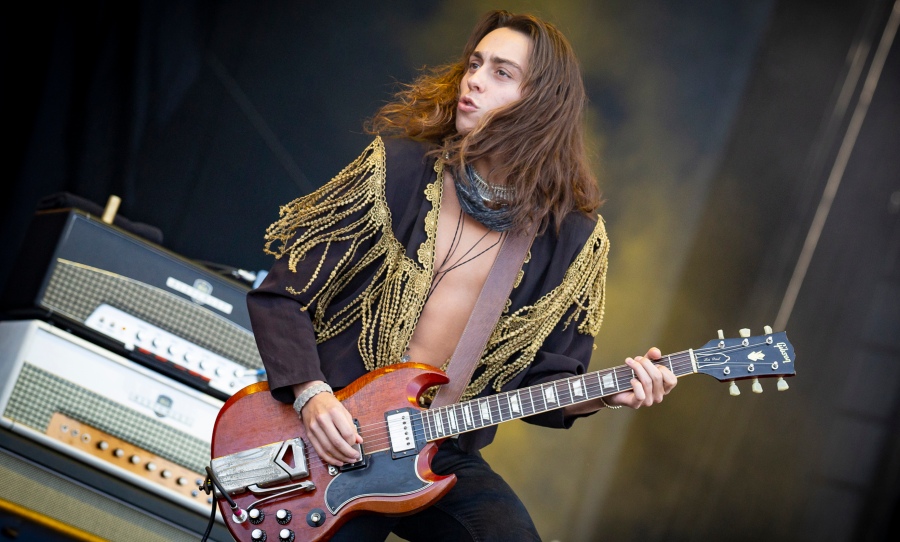
BONUS: the Gibson EDS-1275 Doubleneck
The Gibson EDS-1275 Doubleneck presents the SG body equipped with a second neck for a 12-string guitar and became synonymous with classic rock anthems. In cherry red, Jimmy Page rocked it for Zeppelin’s performances of Stairway to Heaven and The Song Remains the Same.
Eagles guitarist Don Felder played one in alpine white for live renditions of Hotel California and when Guns ‘N’ Roses went on tour for the Use Your Illusion albums, Slash needed one for their cover of Knocking on Heaven’s Door. But he didn’t want to be associated with another red or white model so a roadie managed to hunt down one in a classy black finish.



